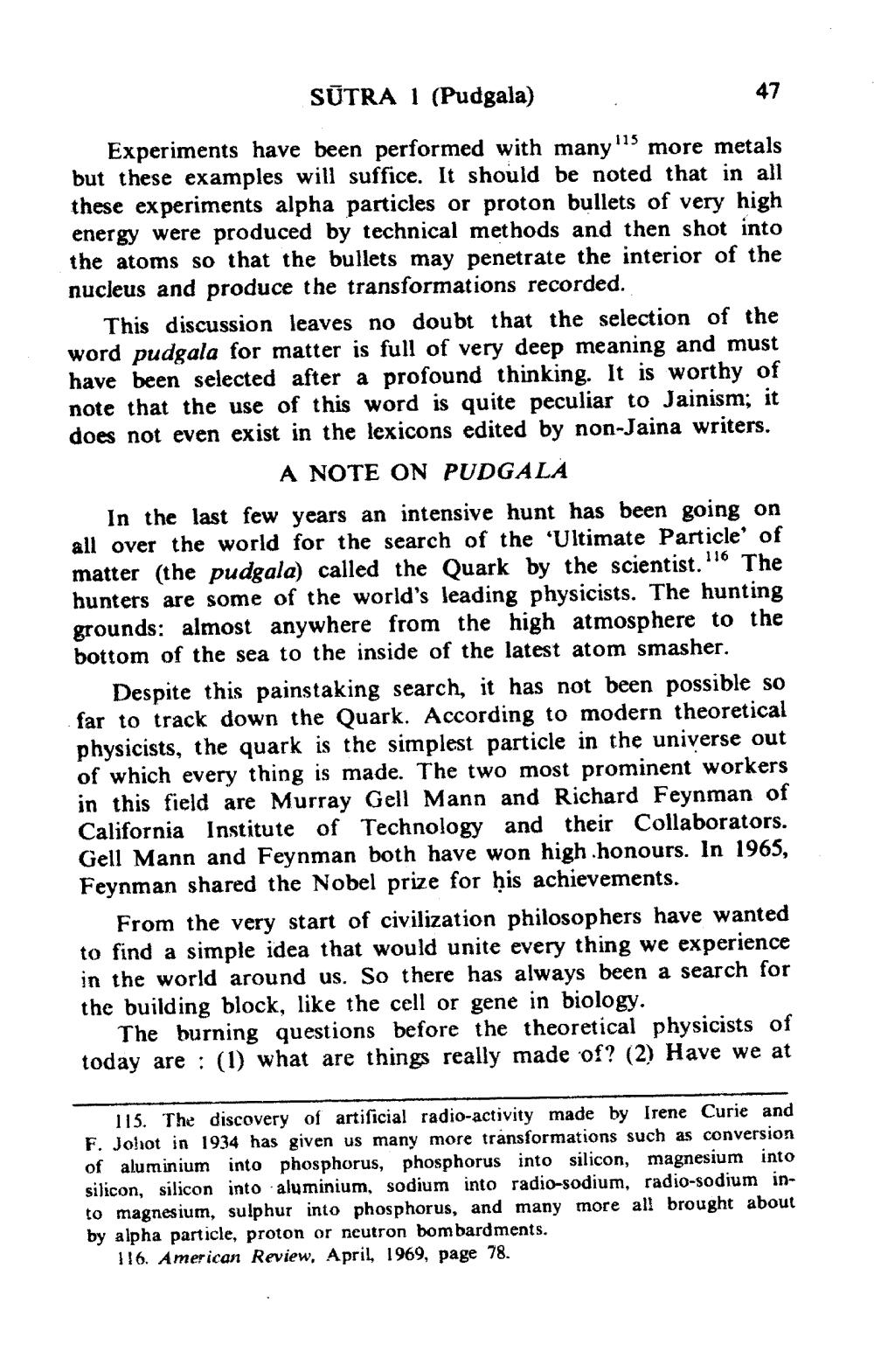________________
47
SUTRA 1 (Pudgala)
115
Experiments have been performed with many more metals but these examples will suffice. It should be noted that in all these experiments alpha particles or proton bullets of very high energy were produced by technical methods and then shot into the atoms so that the bullets may penetrate the interior of the nucleus and produce the transformations recorded.
This discussion leaves no doubt that the selection of the word pudgala for matter is full of very deep meaning and must have been selected after a profound thinking. It is worthy of note that the use of this word is quite peculiar to Jainism; it does not even exist in the lexicons edited by non-Jaina writers. A NOTE ON PUDGALA
In the last few years an intensive hunt has been going on all over the world for the search of the 'Ultimate Particle' of 116 The matter (the pudgala) called the Quark by the scientist. hunters are some of the world's leading physicists. The hunting grounds: almost anywhere from the high atmosphere to the bottom of the sea to the inside of the latest atom smasher.
Despite this painstaking search, it has not been possible so far to track down the Quark. According to modern theoretical physicists, the quark is the simplest particle in the universe out of which every thing is made. The two most prominent workers in this field are Murray Gell Mann and Richard Feynman of California Institute of Technology and their Collaborators. Gell Mann and Feynman both have won high honours. In 1965, Feynman shared the Nobel prize for his achievements.
From the very start of civilization philosophers have wanted to find a simple idea that would unite every thing we experience in the world around us. So there has always been a search for the building block, like the cell or gene in biology.
The burning questions before the theoretical physicists of today are: (1) what are things really made of? (2) Have we at
115. The discovery of artificial radio-activity made by Irene Curie and F. Johot in 1934 has given us many more transformations such as conversion of aluminium into phosphorus, phosphorus into silicon, magnesium into silicon, silicon into aluminium, sodium into radio-sodium, radio-sodium into magnesium, sulphur into phosphorus, and many more all brought about by alpha particle, proton or neutron bombardments.
116. American Review, April, 1969, page 78.




